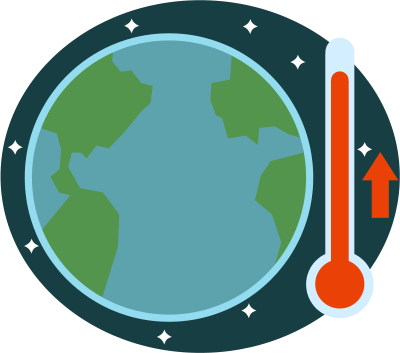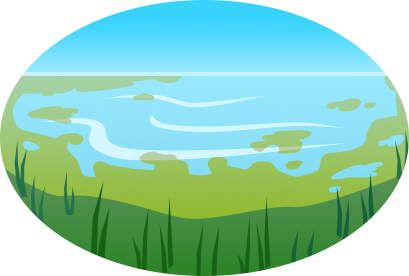FAQ - Climate Change and Water Quality
What effects will climate change have on water?
Scientists predict that climate change will impact water quality both directly and indirectly. Global climate change is expected to increase temperatures, raise sea-levels, and change the patterns, frequency and intensity of extremes of the hydrological cycle, leading to more droughts, intense rains and floods, and increased risk of fires in many places.
Changes to the global hydrological cycle will change seasonal distribution, frequency and intensity of precipitation, with more expected in the tropics and higher latitudes and less in lower and mid-latitudes. Thus, more droughts are predicted in lower and mid-latitudes and more intense rains and floods in higher latitudes. Increased temperatures will lead to increased evapotranspiration and reduced soil moisture, changes in vegetation cover, increased melting of glacial ice and corresponding rise in sea-levels, and increased risk of fires in many places.

How will climate change affect water quality?
Areas that are predicted to receive greater amounts and intensity of precipitation will receive heavier downpours, which lead to increased surface runoff carrying pollutants and nutrients. In areas that will see persisting drought, the remaining water will be of inferior quality due to lack of dilution, concentration of contaminants and increased microbial loads. The increased water temperatures and nutrients will lead to microbial and algal blooms, which are associated with reduced dissolved oxygen. Low oxygen is one of the leading causes of fish kills.

What causes increased frequency of harmful algal blooms?
Climate change is also suspected to be playing a role in the global increase in algal blooms. Warmer water temperatures, higher carbon dioxide levels, increased nutrient runoff due to increasing heavy precipitation – all of these create favorable conditions for algal blooms. Additionally, the droughts that follow heavy precipitation will allow more water to evaporate from the surface, concentrating nutrients and giving algae more opportunity to survive and multiply. These blooms can damage aquatic ecosystems by blocking sunlight and depleting oxygen that other organisms need to survive. Some algae, like red algae and blue-green algae, can produce toxins that damage the human nervous system and the liver.

What are possible effects climate change will have on waterborne pathogens and water quality issues?
Waterborne pathogen contamination is a major water quality concern throughout the world. According to the EPA, pathogens are the leading cause of impairment in impaired and threatened waters in the US. Climate change is expected to lead to heavier downpours, which could lead to increased surface runoff of contaminants, bacteria, and other pathogens, but also to storm water discharge of contaminants into water bodies if the volume exceeds the containment capacity. Increased precipitation will also lead to increased flooding, which may lead to more occurrences of sewage overflow from drains and treatment plants.

How are wildfires associated with climate change and water quality issues?
Climate change is also expected to increase the risk of fires in many places. One of the greatest impacts of wildfires is from extreme runoff due to the loss of vegetation. Wildfires followed by monsoon rainstorms can lead to flooding and all the water quality problems associated with inputs of sediments, debris, ash, and pulses of nitrogen from all the decaying vegetation. The decomposition process consumes oxygen, leading to drops in dissolved oxygen, which can result in fish kills.

Contact:
Rossana Sallenave
Extension Aquatic Ecology Specialist
Extension Animal Sciences & Natural Resources
New Mexico State University
P.O. Box 30003 MSC 3AE
Las Cruces NM 88003
575-646-6093
Email: rsallena@nmsu.edu